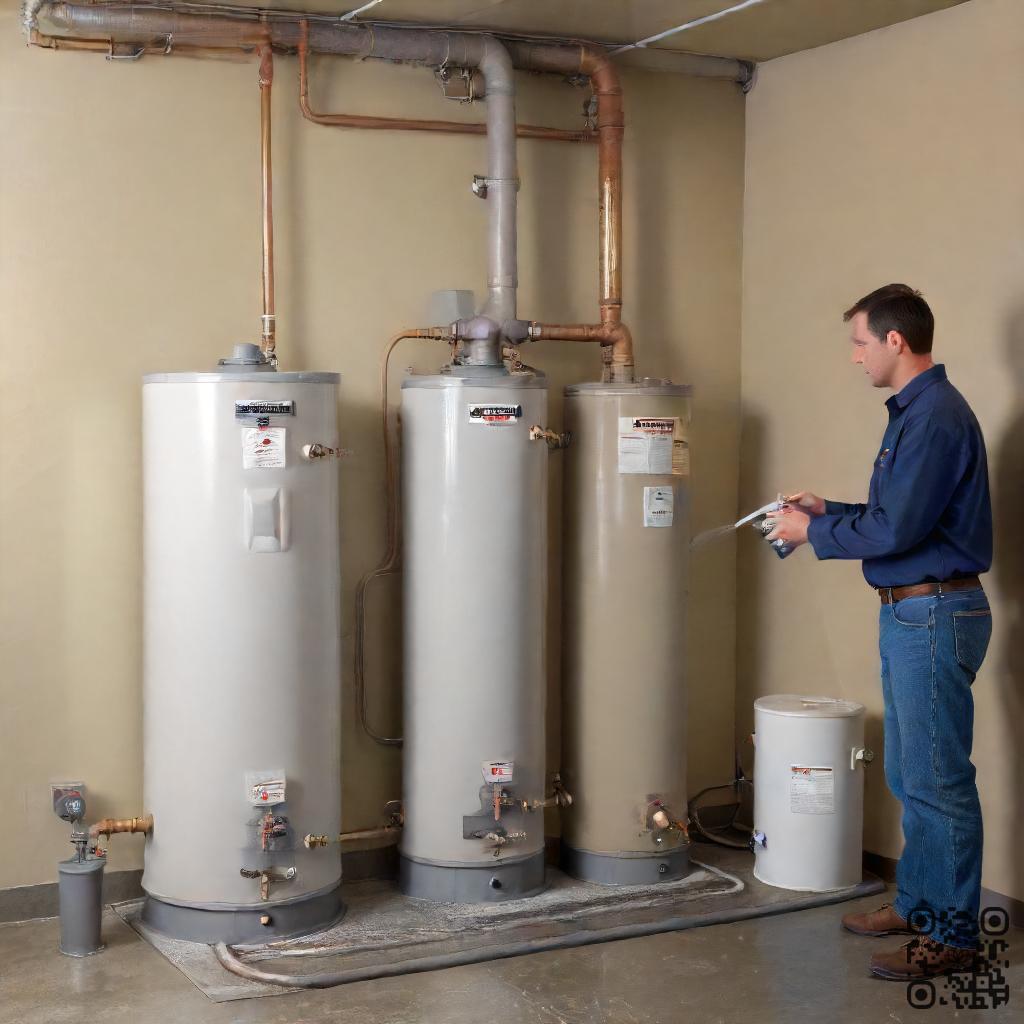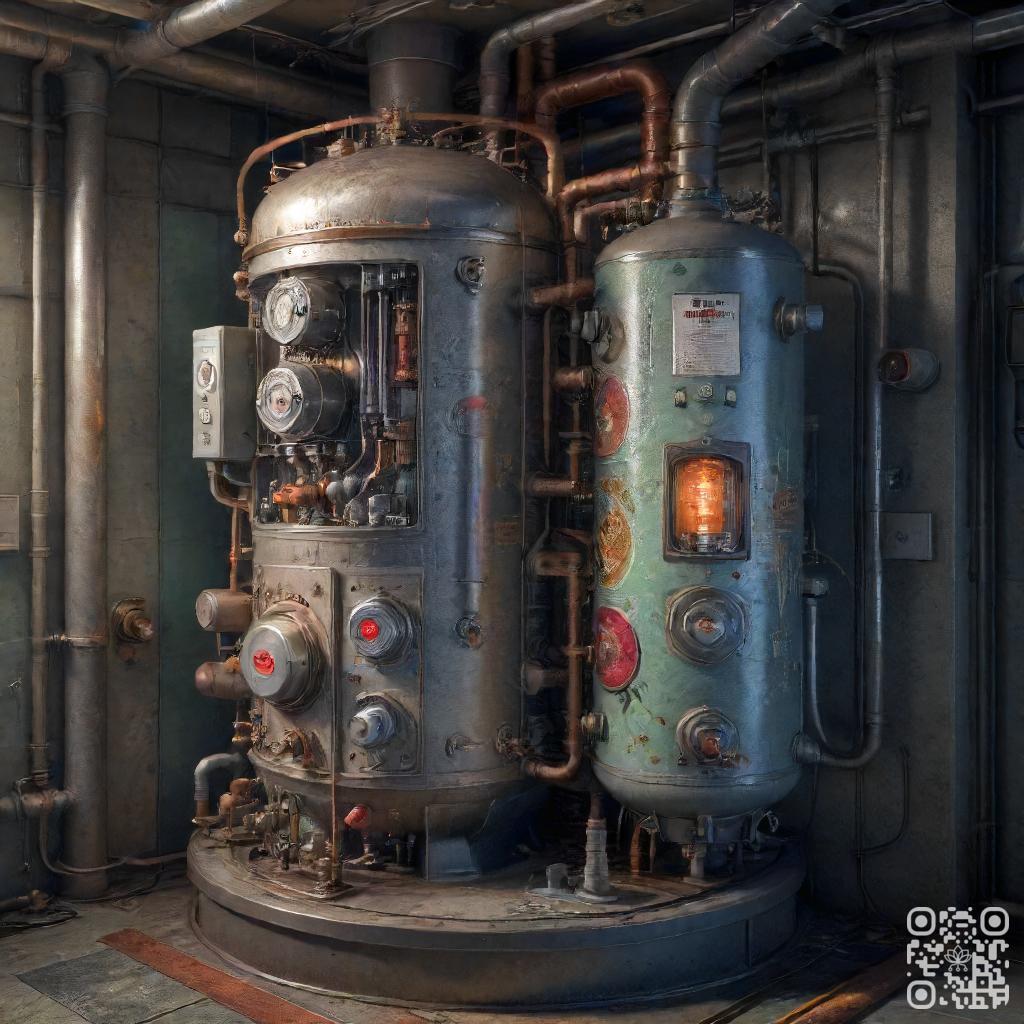
II. Regular flushing of your water heater can help prolong its lifespan and improve its overall performance, as well as prevent costly repairs or replacements.
III. It is recommended to flush your water heater at least once a year, and more frequently if you have hard water or notice any signs of sediment build-up, such as strange noises or discolored water.
Maintaining a clean and efficient water heater is crucial for the overall performance and longevity of your system. Regular flushing of your water heater helps control sediment buildup, ensuring that your unit operates at its optimal level.
By removing sediment, you can prevent clogs, improve energy efficiency, and extend the lifespan of your water heater. Don’t overlook the importance of flushing your water heater – it’s a simple yet effective way to keep your system running smoothly and avoid costly repairs down the line.
Signs that Your Water Heater Needs to be Flushed
1. Decreased hot water supply
If you’ve noticed a significant decrease in the amount of hot water your water heater is providing, it may be a sign that it needs to be flushed. Over time, minerals and sediment can build up in the tank, reducing its capacity and efficiency. Flushing the water heater can help remove these deposits and restore your hot water supply to its full potential.
2. Strange noises coming from the water heater
If you hear strange noises, such as popping or cracking sounds, coming from your water heater, it could indicate a buildup of sediment. As water is heated, minerals and sediment can settle at the bottom of the tank, causing these noises. Flushing the water heater can help eliminate the sediment and prevent further damage to the heating elements.
3. Discolored water
If you notice that the water coming out of your faucets is discolored, particularly if it has a rusty or muddy appearance, it may be a sign that your water heater needs to be flushed. Sediment and minerals can cause the water to become discolored, and flushing the tank can help remove these impurities, improving the water quality in your home.
4. Foul odor
A foul odor coming from your water heater can be a clear indication that it needs to be flushed. Over time, bacteria can grow in the warm, moist environment of the tank, resulting in unpleasant smells. Flushing the water heater can help eliminate these odors and improve the overall quality of your hot water.
5. Increased energy bills
If you’ve noticed a sudden increase in your energy bills, it could be a sign that your water heater is not operating efficiently. Buildup of sediment can cause the heating elements to work harder, leading to higher energy consumption. Flushing the water heater can help improve its efficiency and lower your energy costs.
| Signs | Causes | Solutions |
|---|---|---|
| Decreased hot water supply | Mineral and sediment buildup in the tank | Flush the water heater to remove deposits |
| Strange noises coming from the water heater | Accumulation of sediment | Flush the water heater to eliminate sediment |
| Discolored water | Presence of sediment and minerals | Flush the water heater to improve water quality |
| Foul odor | Bacterial growth in the tank | Flush the water heater to eliminate odors |
| Increased energy bills | Inefficient operation due to sediment buildup | Flush the water heater to improve efficiency |
Pertaining to maintaining your water heater, being aware of these signs can help you identify when it’s time to flush your system. By contending with these issues promptly, you can ensure that your water heater operates efficiently, providing you with a reliable supply of hot water.
For example, let’s say you’ve noticed a decrease in your hot water supply. Flushing the water heater can help remove the mineral and sediment buildup that is causing this issue. By flushing the tank, you can restore your hot water supply and prevent further problems.
Steps to Flush Your Water Heater
Flushing your water heater regularly is essential to maintain its efficiency and prolong its lifespan. By obeying these simple steps, you can ensure that your water heater functions optimally:
1. Turn off the power supply
Before starting the flushing process, it is crucial to turn off the power supply to your water heater. This can be done by switching off the corresponding circuit breaker in your electrical panel. This step ensures your safety whilst working on the water heater.
2. Turn off the water supply
Locate the shut-off valve on the cold water supply line that feeds water into the heater. Turn the valve clockwise to shut off the water supply. This prevents new water from entering the tank whilst you flush it.
3. Drain the tank
Attach a hose to the drain valve located near the bottom of the water heater tank. Place the other end of the hose in a suitable drainage area or connect it to a floor drain. Open the drain valve slowly to let the water flow out. Be cautious as the water might be hot. Once the tank is completely drained, close the drain valve.
4. Flush the tank
With the drain valve closed, open the cold water supply valve for a few seconds. This quick burst of water helps to stir up any sediment that may have settled at the bottom of the tank. Allow the water to flow out through the drain valve again, flushing out the loosened sediment. Repeat this process a few times until the water runs clear.
5. Refill the tank
Once the water runs clear, close the drain valve and turn on the cold water supply valve. Allow the tank to fill completely before turning the power supply back on. Take care not to turn on any hot water taps until the tank is full to avoid potential damage to the heating elements.
Regularly flushing your water heater helps to remove sediment and mineral buildup, ensuring better heat transfer and overall efficiency. By observing these steps, you can maintain the performance and extend the lifespan of your water heater.
Tips for Flushing Your Water Heater
Flushing your water heater regularly is essential for maintaining its efficiency and prolonging its lifespan. Follow these tips to ensure a successful flushing process:
1. Use caution when handling hot water
Before starting the flushing process, make sure to turn off the power supply to the water heater and allow the water to cool down. Hot water can cause severe burns, so it’s crucial to use caution when handling it.
2. Wear protective gear
When flushing your water heater, it’s recommended to wear protective gear such as gloves and safety goggles. This will protect you from any potential splashes or leaks during the process.
3. Follow manufacturer’s instructions
Every water heater model may have specific instructions for flushing. It’s important to consult the manufacturer’s manual or website to understand the correct procedure for your particular water heater.
4. Don’t forget to flush the pressure relief valve
As part of the flushing process, it’s crucial to flush the pressure relief valve. This valve helps relieve excess pressure in the water heater, preventing potential damage. Follow the manufacturer’s instructions to ensure proper flushing of this valve.
5. Consider hiring a professional plumber for assistance
If you’re unsure about flushing your water heater or if you encounter any difficulties during the process, it’s advisable to hire a professional plumber. They have the expertise and tools to ensure a thorough and safe flushing, minimizing the risk of any issues.

How Often Should You Flush Your Water Heater?
1. Factors that determine frequency of flushing
Flushing your water heater regularly is crucial for maintaining its efficiency and extending its lifespan. The frequency of flushing depends on several factors:
- Water quality: If your water supply has high mineral content or is hard, it can lead to sediment buildup in the tank more quickly. Flushing should be done more frequently in such cases.
- Usage: If your household uses hot water extensively, the chances of sediment accumulation are higher. Flushing should be done more often in homes with larger families or high hot water usage.
- Age of the water heater: Older water heaters are more likely to have accumulated sediment over time. If your water heater is over 10 years old, it may require more frequent flushing.
2. General guidelines for flushing frequency
During the frequency of flushing can vary based on the factors mentioned above, there are some general guidelines to follow:
- Annual flushing: It is recommended to flush your water heater at least once a year to remove any sediment buildup and ensure optimal performance.
- Bi-annual flushing: If you live in an area with hard water or have noticed decreased hot water efficiency, flushing every six months may be necessary.
- Professional inspection: Consider scheduling a professional inspection of your water heater to determine the ideal flushing frequency based on its specific condition.
3. Importance of regular maintenance for longevity of water heater
Regular maintenance, including flushing your water heater, is essential for its longevity and efficiency. When sediment builds up in the tank, it can reduce the heating efficiency, increase energy consumption, and even lead to premature failure. Flushing helps remove the sediment, ensuring optimal performance and preventing potential issues.
| Key Points | Benefits |
|---|---|
| Regular flushing | Improves efficiency |
| Consider water quality | Prevents sediment buildup |
| Follow manufacturer’s guidelines | Extends lifespan |

Benefits of Flushing Your Water Heater
1. Improved water quality
Flushing your water heater regularly can lead to improved water quality. Over time, sediment and mineral deposits can build up in your water heater, affecting the taste and clarity of your water. By flushing the heater, you can remove these contaminants and enjoy cleaner, fresher water.
2. Increased efficiency
A flushed water heater operates more efficiently. When sediment builds up in the tank, it can insulate the heating element, forcing it to work harder to heat the water. This can result in increased energy consumption and higher bills. Flushing the water heater removes the sediment, allowing it to perform at its optimal efficiency.
3. Extended lifespan of water heater
Regular maintenance, such as flushing the water heater, can help extend its lifespan. The buildup of sediment and minerals can cause corrosion and damage to the tank and heating element over time. By flushing the water heater and preventing this buildup, you can help prolong the life of your appliance.
4. Reduced energy bills
Flushing your water heater can lead to reduced energy bills. As mentioned earlier, sediment buildup can cause the heating element to work harder, resulting in increased energy consumption. By flushing the water heater and improving its efficiency, you can lower your energy usage and save money on your monthly bills.
5. Peace of mind knowing your water heater is functioning properly
Regularly flushing your water heater, you can have peace of mind knowing that it is functioning properly. Flushing helps remove any potential issues caused by sediment buildup, such as clogs or leaks. This proactive maintenance can help prevent unexpected breakdowns and ensure that your water heater is working efficiently.
| Benefit | Description |
|---|---|
| Improved water quality | Flushing removes sediment and mineral deposits, resulting in cleaner water. |
| Increased efficiency | Flushing allows the water heater to operate at optimal efficiency, reducing energy consumption. |
| Extended lifespan of water heater | Regular flushing helps prevent corrosion and damage, prolonging the water heater’s lifespan. |
| Reduced energy bills | Flushing improves efficiency, leading to lower energy usage and cost savings. |
| Peace of mind | Regular flushing prevents potential issues, ensuring the water heater functions properly. |
Bottom Line
Flushing your water heater regularly is crucial for maintaining its efficiency and prolonging its lifespan. Sediment buildup can cause a range of problems, from reduced hot water supply to damage to the tank and heating elements. By flushing your water heater, you can remove sediment and prevent these issues from occurring. It’s recommended to flush your water heater at least once a year, or more frequently if you have hard water or notice signs of sediment buildup. During it may seem like a hassle, taking the time to flush your water heater can save you money in the long run by preventing costly repairs and replacements.
Overall, flushing your water heater is a simple and effective way to control sediment and keep your system running smoothly. Don’t neglect this important maintenance task, and you’ll enjoy reliable hot water for years to come.
Read More:
1. Sediment Filter Installation In Water Heaters
2. Can Sediment Damage Water Heater Components?










